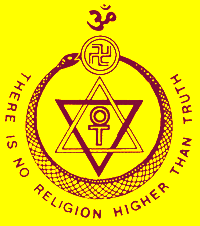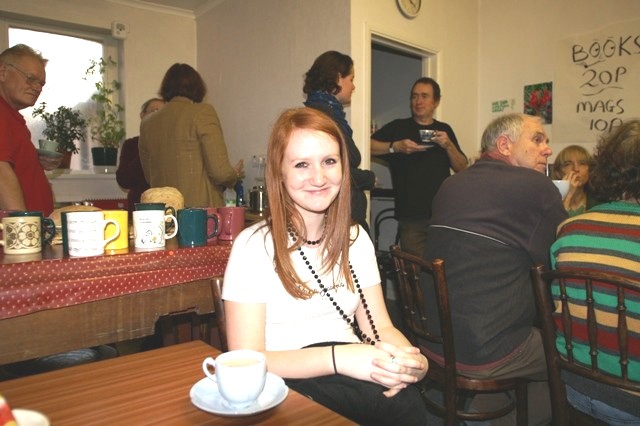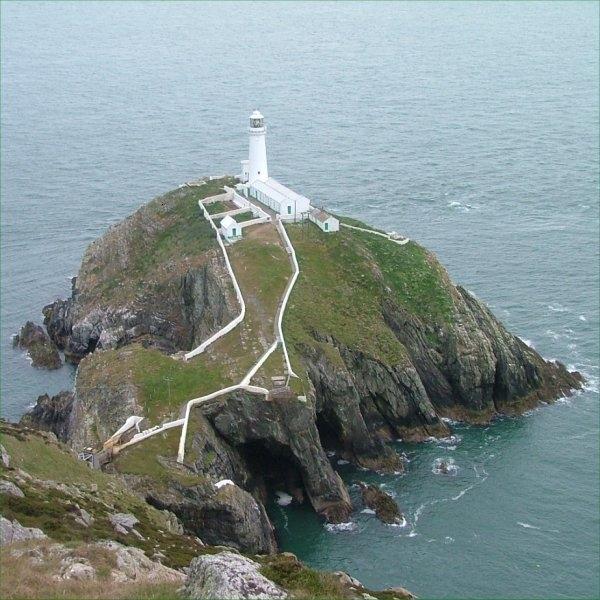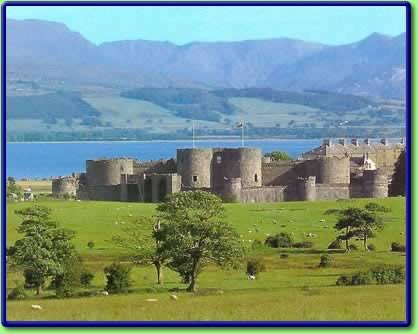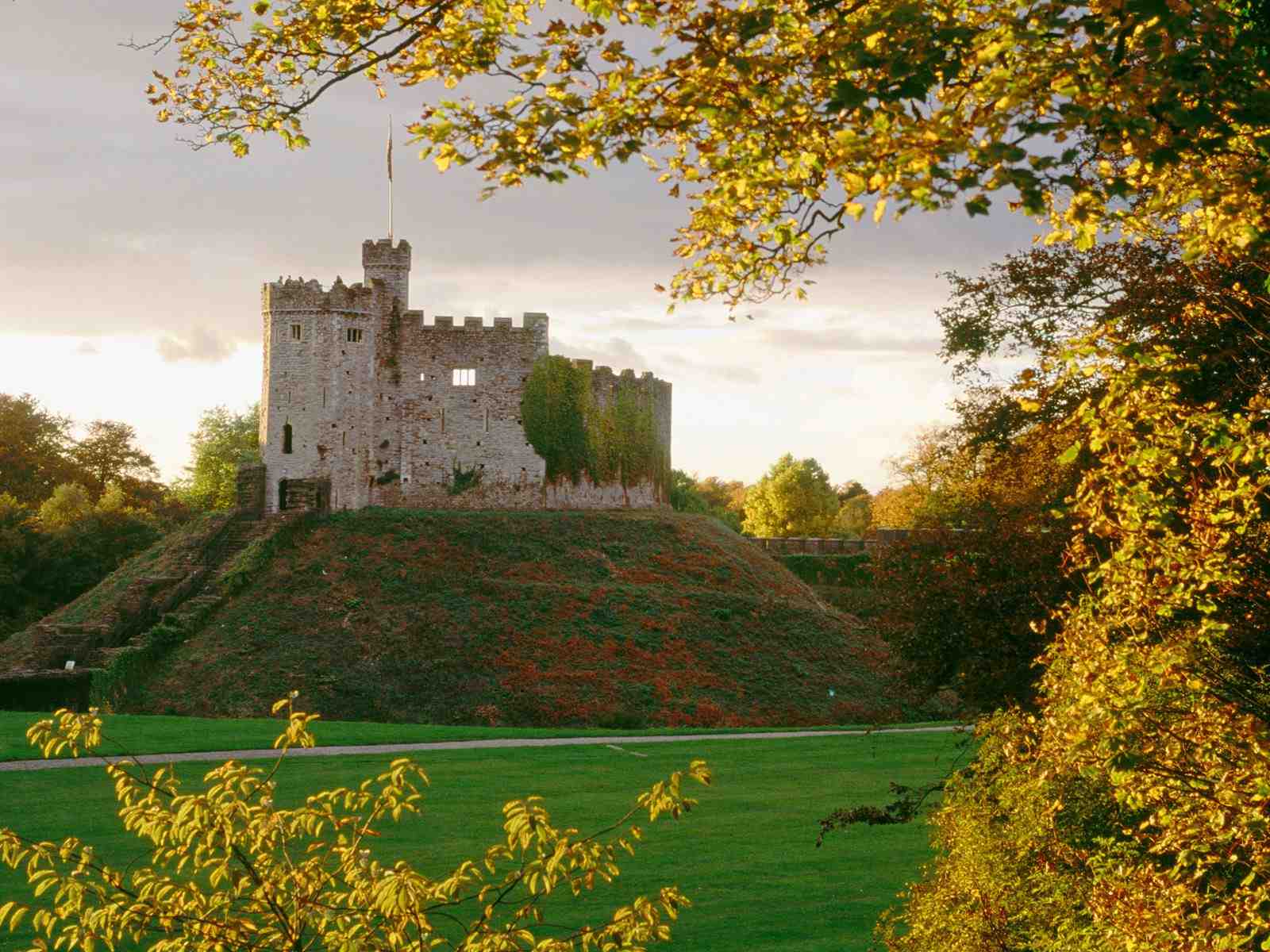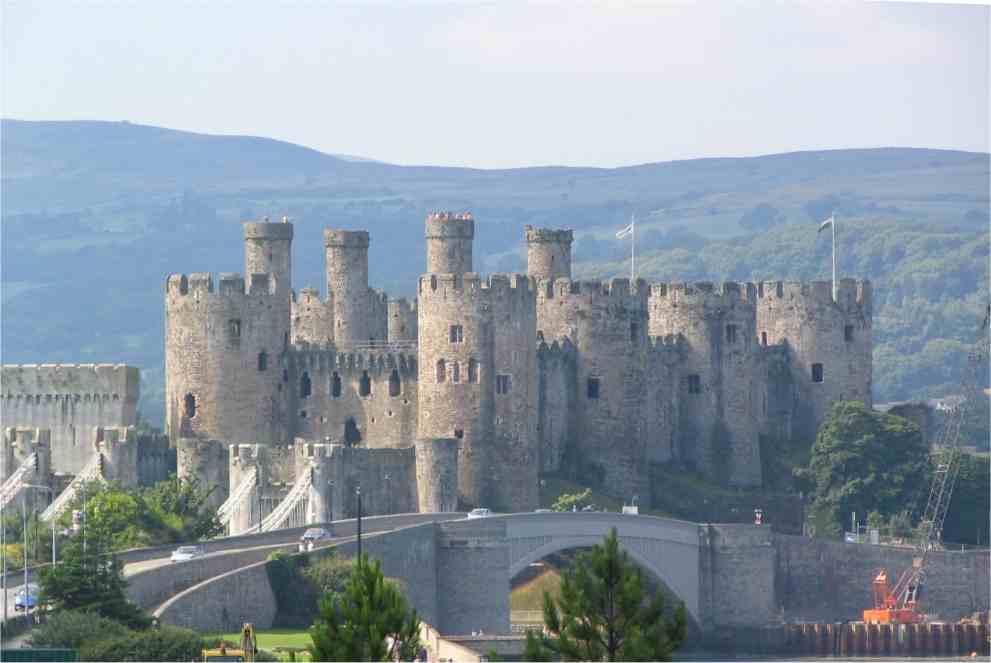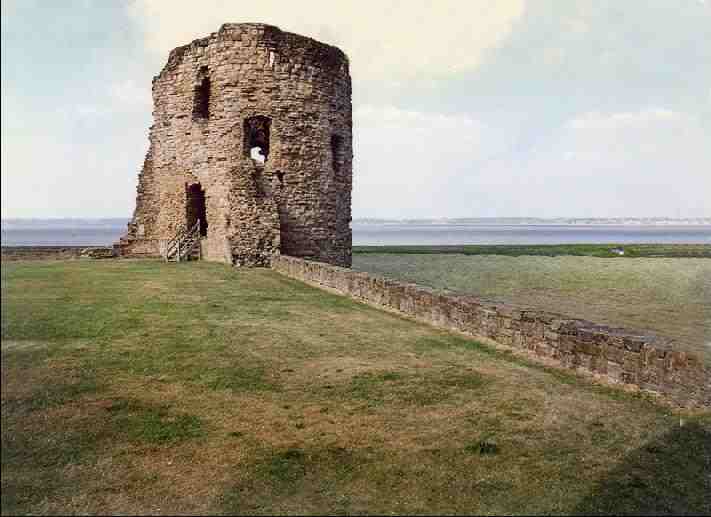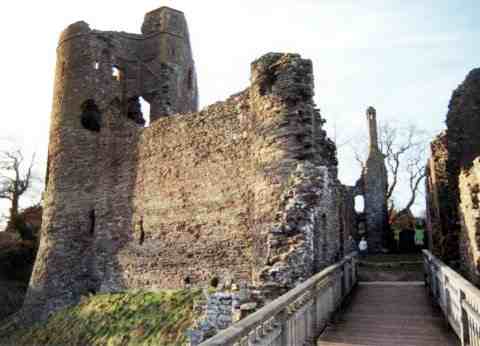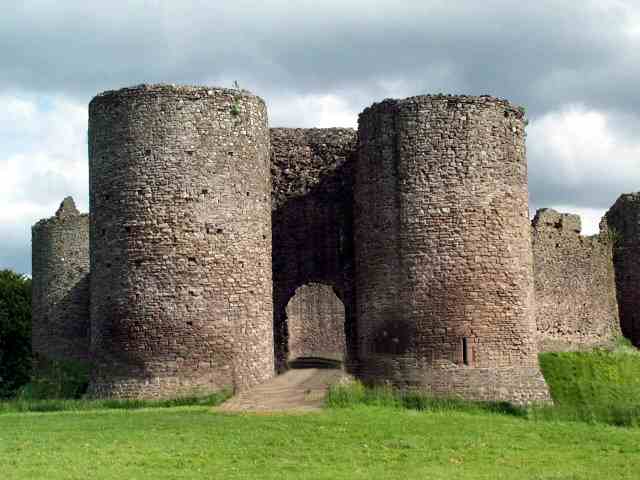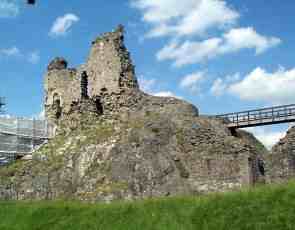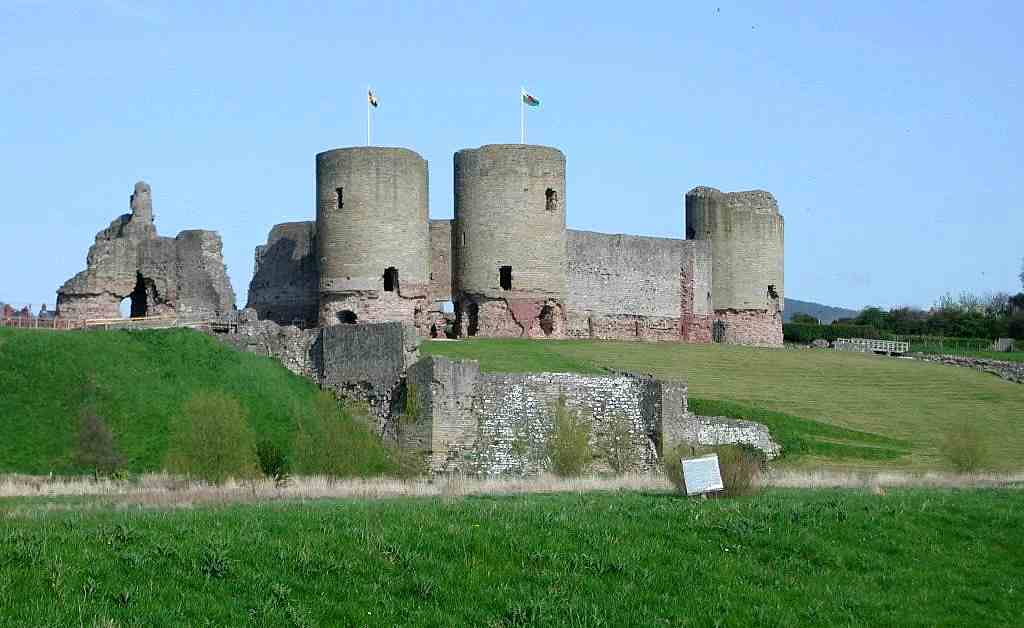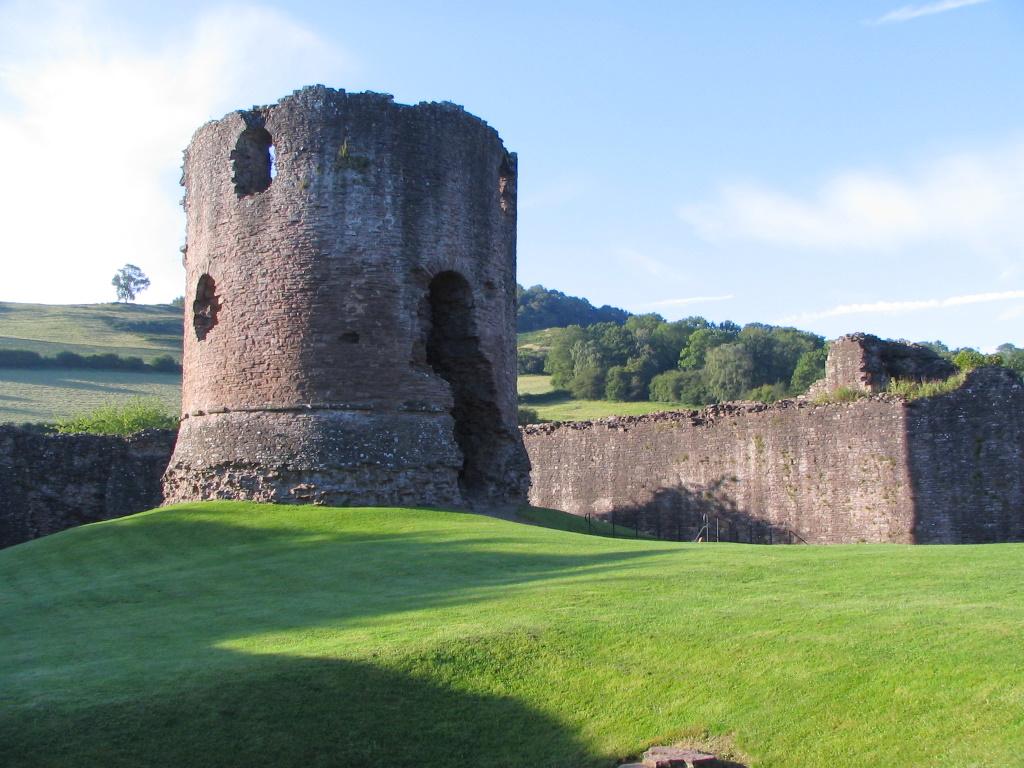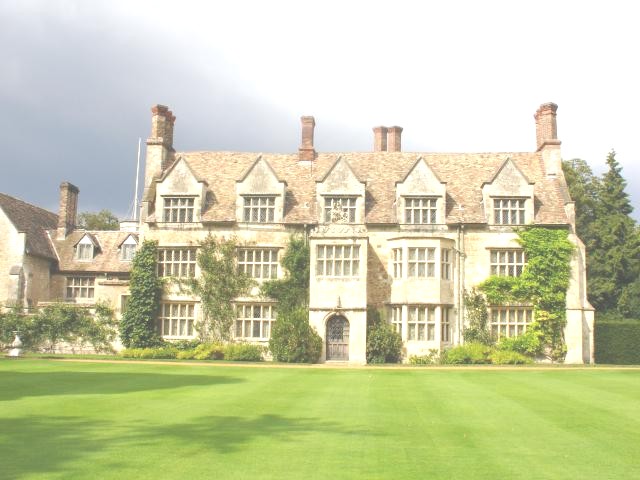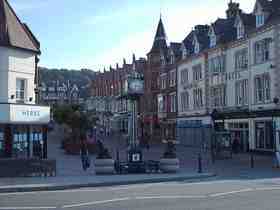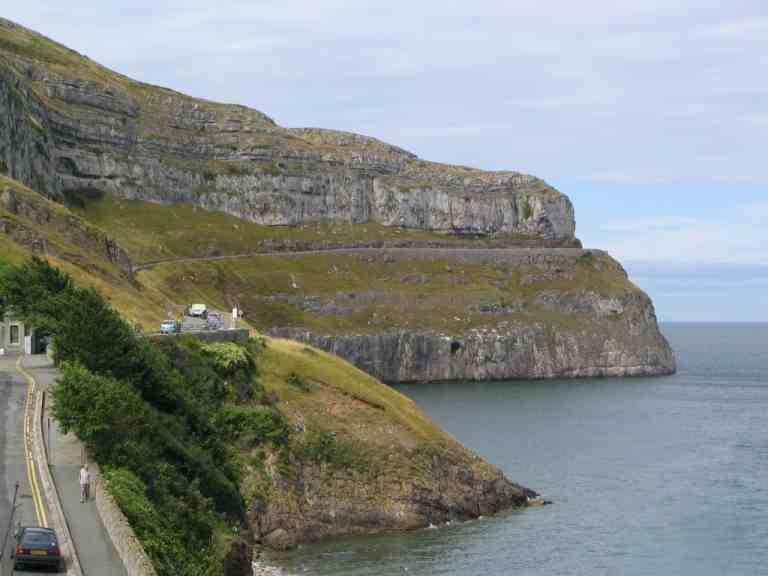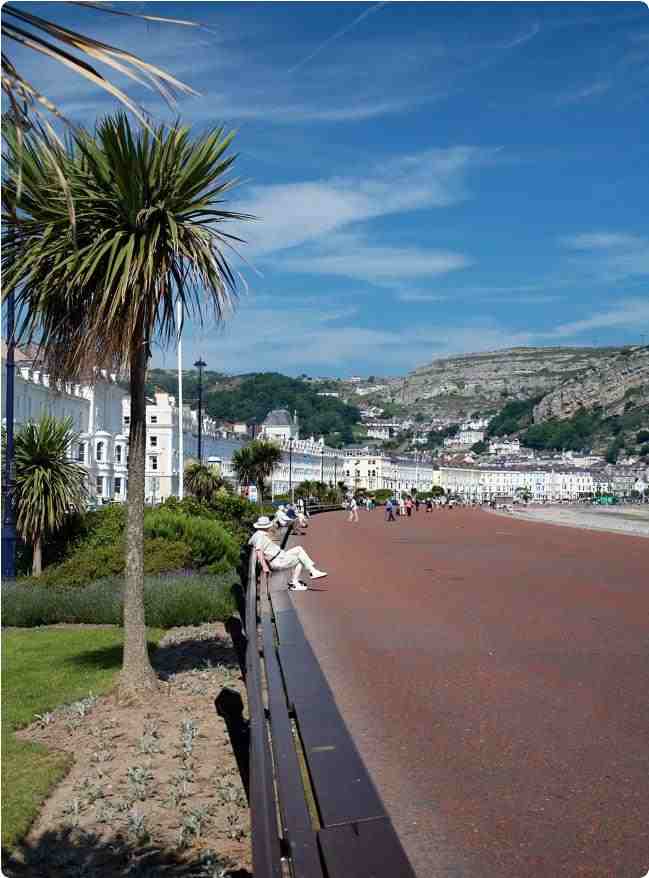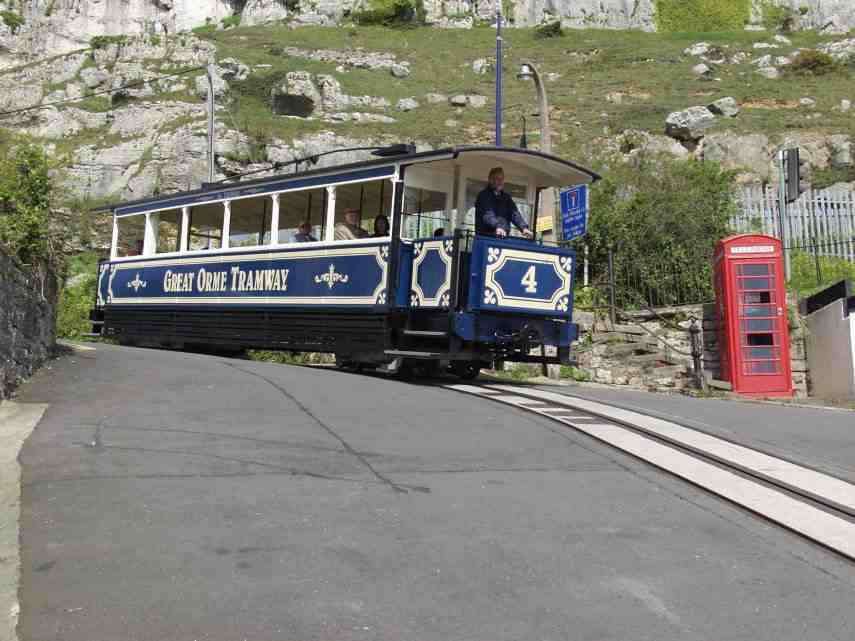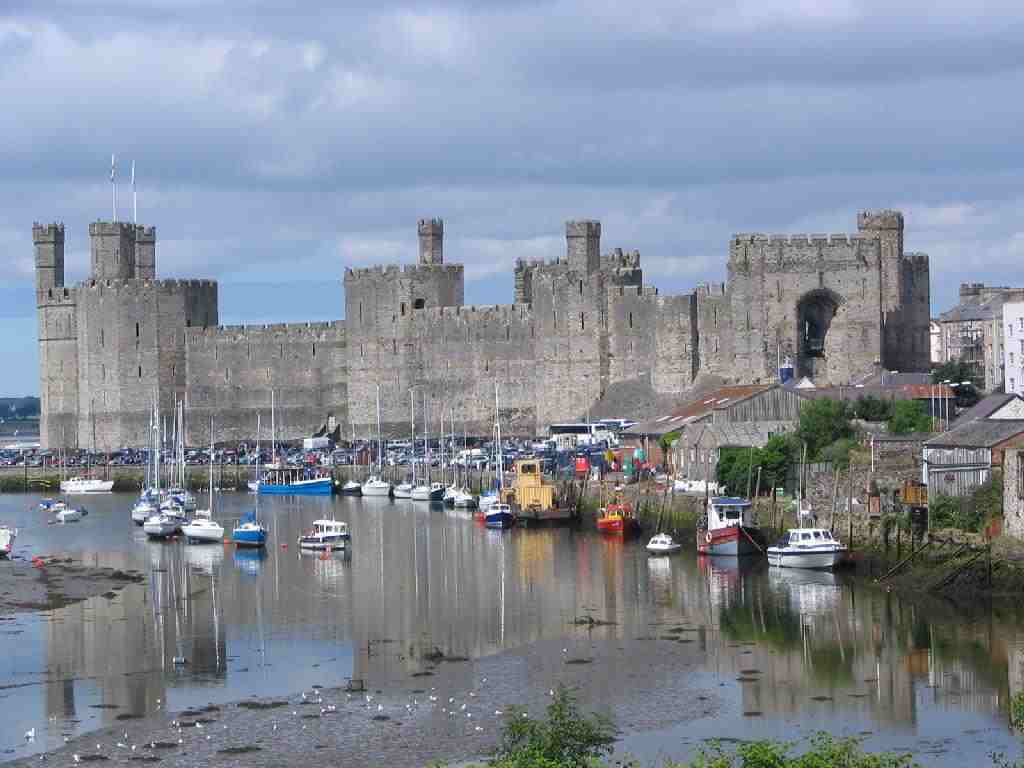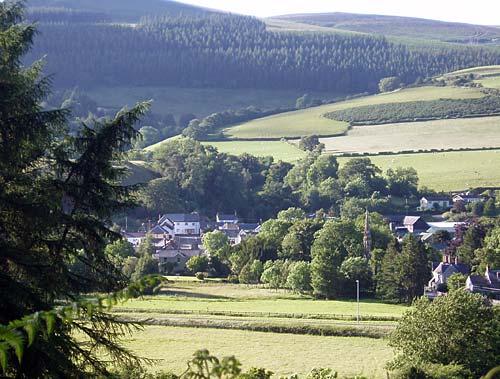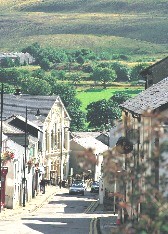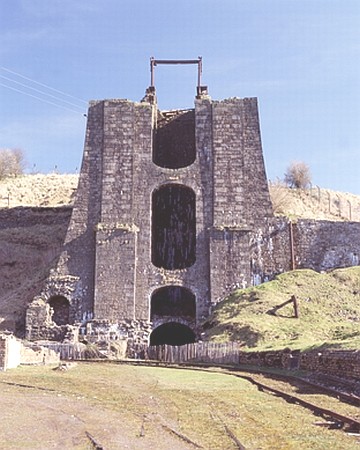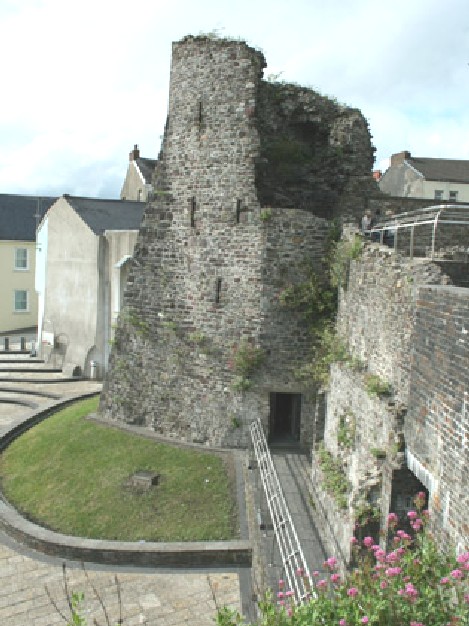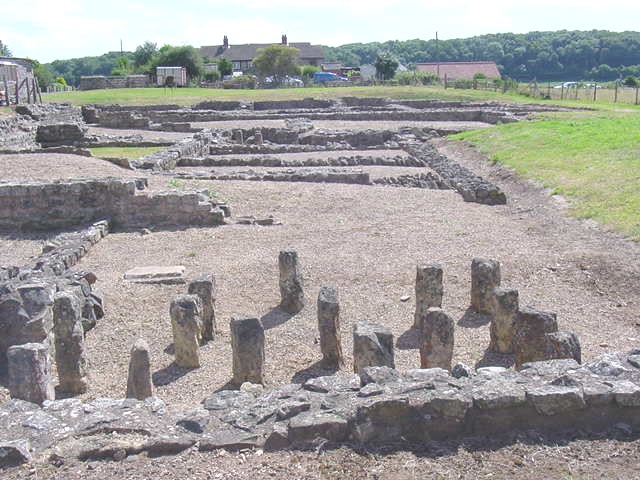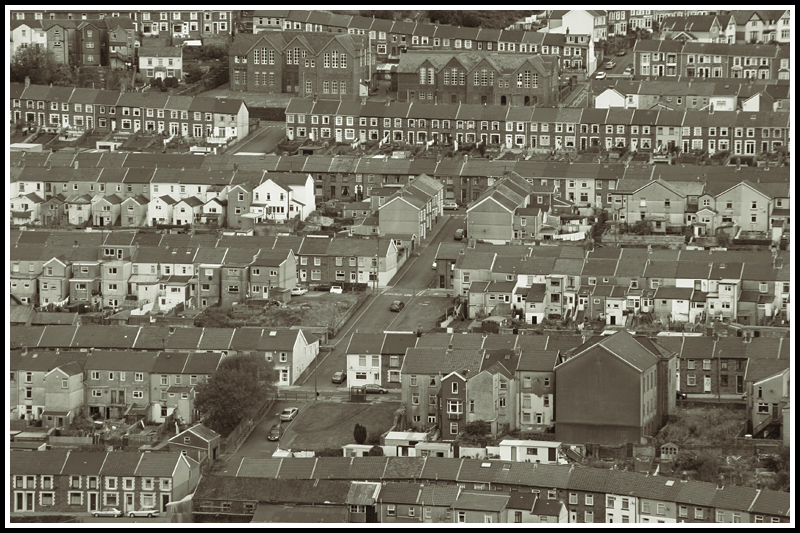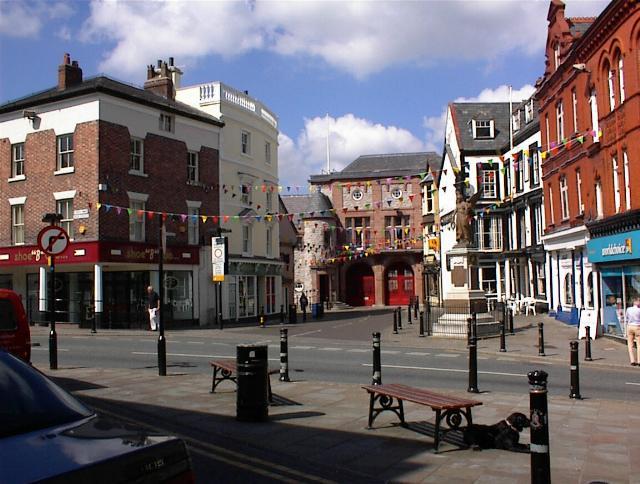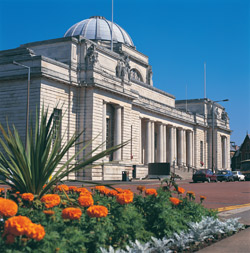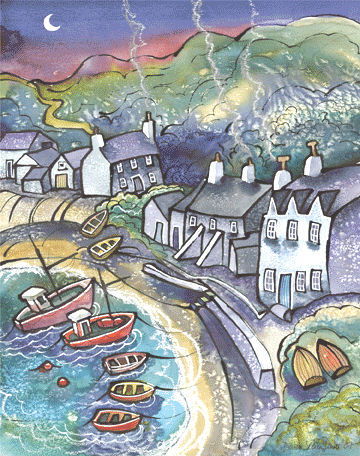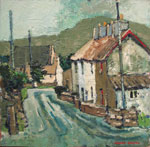Cardiff, Wales, UK, CF24 – 1DL.
Theosophy and Art
Art as a
Factor in the Soul’s Evolution
by
C.
Jinarajadasa
From the
Proceedings of the
Federation of
the European Sections
of the
Theosophical Society,
First
Published February 1915
All real
Art is the disimprisoned soul of Fact
Thomas
Carlyle
IT is difficult to define Theosophy with a phrase; but were once asked
so to define it, perhaps one could hardly do better than say that it is a way
of looking at the universe and man from the standpoint of their Creator. To
look at everything from the standpoint of God and not of man — this is the gift
that the
Divine Wisdom bestows on those that cherish her. Hence it is that there
is nothing in life that is not interesting to the Theosophist; the speck of
dust on the ground, and the glowing nebulas in the heavens that are to form
solar systems, the tiny living cell with its untold mysteries, and the Elder
Brothers
of our race that are the glory of our humanity — all these have their
message for him and tell him something of Theosophy. Science, Art, Religion,
and Philosophy, every conceivable branch of knowledge, is but a means whereby he gains a glimpse of the
Divine Wisdom that is the manifestation of the mind of God.
With this old and yet ever new synthesis of life's activities to guide
his vision, man looks on the universe with new eyes; he holds in his hands the
key to the riddle of the universe, and even if when veil after veil is lifted
there must be veil upon veil behind, yet each raising of a veil will only add
glory to his vision.
With the first true glance into the real meaning of life that comes with
the study of Theosophy in its modern presentation, three facts will ever stand
insistent before the consciousness of man. Of these the first is that
everywhere in the universe, at every conceivable point in space, and yet
outside it all, there is a Consciousness, the expression of whose Will is the
universe visible and invisible. Call it by what name we will, the fact is the
same; God, Absolute Spirit, Divine Law — these are merely so many different
ways of conceiving this truth. We may regard God, the one Consciousness behind
all things, with many a philosopher as Pure Being, or as the Eternally Holy
from the standpoint of religion; it will be the aim of this paper to point out
the significance of yet another aspect as the Infinitely Beautiful.
It is this aspect that the divine Plato revealed to the world; and the
few in
Furthermore, this consciousness or being of God manifests itself in the
universe, we are told, in a trinity of threefold activity, symbolized in
diverse ways in the world-religions; of these many trinities, which are
symbols, one is taken for the purpose of this paper — that of Power, Wisdom and
Mind.
Usually this trinity is thought of as Power, Wisdom and Love; but Mind
is here substituted for Love for the following reasons. As the words are here
used a difference exists between Mind and Wisdom; mind it is that gathers facts
of consciousness, analyses them, synthesizes them, and thus slowly comes to
certain conclusions, and finally to generalization; through the workings of the
mind there arises knowledge, as distinct from wisdom. But wisdom does not
analyze or synthesize; the thing or law is known by another process, whose
faint manifestation among us now is the intuition; it is known from within and
not from without. When wisdom works, for an instant the duality between the
knower and the thing known ceases, and the new fact of consciousness is gained
from within.
Wisdom, then, is the second aspect of the Trinity. But in reality Wisdom
is, to our consciousness, a flashing back and forth between a duality of Beauty
and Love. There may be knowledge of a thing or person through the working of
the mind, through reason, through judgment; but the wisdom of it arises when
through a flash of what to us is love there arises a momentary identification
of knower and known, and with that the
sensing of the Pattern or Archetype, the Beautiful-in-itself, of which the
thing known is a particular manifestation. Beauty, then, cannot be separated
from Love, nor Love from Beauty, for they are the inseparable dual
manifestations in time and space of Wisdom.
The second great fact that is understood with the true vision of life is
that everything in the universe is directed by intelligence. We realize that
the scheme of life and activity that we call evolution is the result of a
conscious direction; and that this direction is in accordance with a Plan made
by a Master
Mind. Facts of evolution from this standpoint assume a new significance,
for evolution is the realization in our world of consciousness of this divine
Plan. Nature is not, then, blindly working to produce forms that will adapt
themselves to changing conditions, but it is chaos that is being slowly and
laboriously
moulded into a cosmos after a Pattern that exists from the beginning of
things.
This pattern is Plato's World of Ideas, in which exist the archetypes of
things. In one of its aspects it is Kant's world of the things-in-themselves,
out of space, time and causality; it is, too, the Divine Mind of
Before the beginning of evolution, the Divine Mind conceives the
archetypes of forms in which the divine
life is to manifest; but before man's consciousness which is an
expression of that life can exist in full self-consciousness in the archetype,
it must first slowly be conscious on a lower realm in the several
manifestations of that archetype. Let us consider, for instance, what seems an
evident fact, that it is in the scheme of evolution
that the human soul is to be clothed in the future in an ideal form,
perfectly beautiful and a full expression of the life within. The Divine Mind
conceives the archetypal form, and thence it exists as an absolute reality in
the World of Ideas. But a long process of evolution has to be gone through
before this aim
can be realised, and the human soul in full consciousness can take the
archetypal form itself as its vehicle. First, the archetype is brought down
from the World of Ideas into lower regions; when this happens, the archetype,
that is the reality at the back of a general concept, at once manifests itself
as many
particulars; forms then are to be built up in matter with these
particular manifestations as models. Furthermore, as self-consciousness in the
human soul is first developed in the lowest realms of matter, these particular
types will there appear; they will, perhaps, be hardly recognisable as
particulars, for the
virgin matter is difficult to mould and the forms will be of the
roughest and crudest. But slowly, race after race, the guiding intelligences
modify these crude manifestations one after another so as to perfect them; and
thus the human consciousness is taught to pass from a vehicle of one particular
type to that of another and so slowly onwards to life in the archetype itself.
This, then, is the reason, when we consider the human form, that we can
trace its broad outlines in the lowest vertebrata and the planning for it in
yet earlier forms; the slow laborious march of evolution through one kingdom of
nature after another, and in the human, through one race after another, is all
but the work of teaching the divine life, that at our stage is the human soul,
to grow in power, till it shall be able to exist in the archetypal form
itself and so stand in the presence of God the Father as His perfect Son.
Similarly, too, just as there exists as the perfect vehicle of man's
consciousness the archetypal form to which we are marching, so also are
there archetypes behind all particulars, whether they be forms, emotions, or
thoughts; and the work of evolution is to train man to live in these archetypal
ideas and
emotions, and not in their particulars, and so realize his divinity.
Three facts, it was stated, stand clearly before the student of
Theosophy; of these, two have been mentioned; first, that there is in the
universe behind all force and matter a Consciousness, omnipresent and eternally
beneficent, call it by what names we will; and, second, that this Consciousness
has at the beginning of things made a plan in accordance with which evolution
is being
guided. The third follows from these two, and it is that man's duty is
to understand what is this Plan and work in harmony with it, for his progress
and happiness lie in that alone. It is the understanding of the Plan and the
harmonious working with it that is the theme of this paper, showing in what way
Art may be a means.
Now man, the child of God, is made in the image of God and just as there
is in the Unity of the Divine Consciousness a trinity of manifestation, three
similar aspects are found in man also. The divine trinity of Power, Wisdom and
Mind, Father, Son and Holy Ghost, finds its reflection in man as Spirit,
Intuition and
Intelligence. In the growth of the soul the expansion of consciousness
proceeds from below and hence the first to manifest in man is Intelligence; and
then what is designated by the term Intuition, which embodies in itself not
only a sense
of unity through love, but also the essence of Intelligence; and
finally, when man approaches perfection, Spirit manifests in all its power,
containing within itself all that was the life and soul of Intuition and
Intelligence.
Man's duty is to work with the divine Plan. But at first man's soul is
but feebly conscious, with but little intelligence, and he finds himself united
to an animal of much power that has been slowly built for him through the ages
through the long process of evolution. The body and its energies are the
vehicle of the soul, but they have come from the animal world, bringing with
them the animal tendencies of self-assertion and selfishness and the
strong instinct for the need of a struggle for existence and self-preservation.
Were man left alone to evolve by himself at this stage, progress would be
infinitesimal, and indeed there would be far more a reversion to animal
brutishness than an evolution to human virtue.
But man is not left alone to evolve; teachers and lawgivers, the
perfected men of a past age, with a knowledge of the divine Plan, now appear
and direct the growth of the souls of men. At first, very largely, an element
of fear comes in the rules of guidance, for the only thing that the savage
knows is that pain is to be avoided; he has only intelligence working in him,
and only this can be appealed to; and the guiding rules are of such a nature
that even his dim intelligence can assent to them, seeing how according to them
transgression and pain follow in quick succession. There is, nevertheless, in
him intuition, a higher faculty than intelligence; it is feeble, only a spark
that has just come from the flame. This is a far more potent factor in the soul
than the intelligence, and even at this early savage stage an appeal is made to
this nascent Godhead within. Hence there are proclaimed to him dictates of
altruism, proved more false than true within the limited experience of the
dawning intelligence, such as, Hatred ceases only by love, Return evil with
good, Love
thy enemies; and we shall find that in
almost every savage community there exists or has existed this teaching
of altruism, generally attributed to some mythical hero or god.
We must not forget this fact, that always in man, even at the lowest,
there is within him something that can respond intuitively to the highest code
of ethics and give assent thereto, though it may be almost impossible to put it
into practice; it is this that shows the possibility that a human soul may
evolve
through good alone to possess in perfection and strength all those
qualities of heart and mind that normally are strengthened, but not originated,
in the struggle with temptation and evil. “There is a natural melody, an
obscure fount,
in every human heart. It may be hidden over and utterly concealed and
silenced — but it is there. At the very base of your nature, you will find
faith, hope, and love. He that chooses evil refuses to look within himself,
shuts his ears to the
melody of his heart, as he blinds his eyes to the light of his soul. He
does this because he finds it easier to live in desires. But underneath all
life is the strong current that cannot be checked; the great waters are there
in reality”.
Slowly man evolves through experience. At first many experiences are
required to teach him one law; he has but the intelligence to work with, and
many isolated experiences does he go through before there rises in his mind the
generalization
that is the law of conduct or the truth of nature. Life after life
he
lives on earth making slow progress, slowly generalizing, one at a time,
the immutable laws of things. At first, carried away by the impetuosity of the
desires of his earthly garment, he is unjust to many, and through that reaps
much suffering, the result of his injustice to others; but slowly there arises
in his mind the idea of justice as a law of his being. Again, too, being the
slave of the will to live, and with a fierce thirst for sensation, he goes to
extremes, recoiling from excess of one kind of sensation or emotion to
excess of other kinds, suffering much in the process and learning but little;
but still gradually, as the outcome of his experiences of pleasure and pain,
there arises within him another law of being, temperance. Similarly, too,
through refusal to
recognize the just bounds that are imposed upon him by the eternal laws,
through impatience to obtain what is not yet his due, he brings suffering on
others by these means, and himself suffering in return, he slowly learns
patience — patience to plan and to achieve and to suffer without complaining.
Each of the virtues that the man learns throughout his many lives
becomes a law of his being; it is a generalization from many particular
experiences, but when once generalized is his own for ever, a part of himself;
and in so far as he thus generalizes, he gets a glimpse of the divine Plan in
which the
generalizations exist as archetypal ideas.
We now see the usual method of evolution; man learns the immortal virtues
through experience. But experience is a slow teacher, for many particular
experiences, requiring perhaps many lives on earth, are needed to instil into
the man's soul one truth; is this the only method of building into our inner
natures the virtues of Loyalty, Honour, Purity, Sincerity, and the others ?
Were there no other method, evolution would achieve too little at the expense
of much energy dissipated.
There is, however, another way. Man has not only the one aspect of
intelligence; there is a higher one of intuition — Buddhi is the name we give
to it in our Theosophical studies. Beauty and love are its dual manifestation,
but through either it is awakened. When, then, a man lives his lives on earth
and loves a few here and there with whom he comes into contact, the Buddhi, the
soul of intuition, grows within him. For love, in truth, manifests the
immortality within, for it is a desire for the everlasting possession of the
good and the beautiful.
Here, then, is a new factor to help his evolution. Intuition transcends
reason; wisdom comes from its exercise, not merely knowledge, as from mind;
intuition generalises from within and not from without, not through many
particulars, but by sensing the archetype itself. We see thus a new method of
realising the
virtues, through their archetypes, the divine Ideas themselves, a
method by which evolution can be
hastened by anticipating experience. Man thenceforward begins to live in the
eternal.
Now we can understand the place of Art as a factor in the soul's
evolution. Art, in its highest manifestation, always deals with the archetypes.
“Its one source is the knowledge of Ideas; its one aim the communication of
this knowledge” (Schopenhauer). Music, the Drama, Poetry, Sculpture, Painting,
and the other
branches of Art, in so far as they show us types of life and form, are
true manifestations of Art; in so far as they fall short of this, they are but
playing with fleeting shadows.
The divine Ideas are archetypes of natural things, objects and forms
that manifest in the orderly process of nature, as a result of the unseen
forces that guide evolution; the beauty in them is a reflection of the beauty
of the archetypes. We have, however, many things of man's manufacture that may
be beautiful — lovely designing and ornamentation, work in silver and gold.
Now it does not follow that because we postulate the Idea, or archetype,
for such a natural object as a tree or a flower, that there is of a necessity
an archetype for an artificial manufactured article like a chair or a table or
a book; nevertheless these latter may be beautiful, if in them the artist tries
to embody reflections of several concepts of the archetypal world, such as
grace, rhythm, harmony.
When the artist deals with a natural thing, he must try to sense the
archetype; if he paints a rose, he must suggest to us through its species the
particular conception, a rose, and through that the archetypal idea, flower, an
eternal concept; does he merely paint a hand — then the more it suggests to us
the archetypal hand the more beautiful it will be. And here we see the true
significance of genius. It is the ability of the human soul to come into
touch with the World of Ideas. But it is not the artist alone who is a genius;
the philosopher with his broad generalisations, the pure-hearted saint in his
lofty contemplation, the lover who through human loves rises to one divine, all
live in a realm where “eternity affirms the conception of an hour", for
genius is the power of giving expression to the unexhausted forms of creation
potentially existing in the mind of the Creator”.
The true function of Art is to put us in touch with archetypal concepts,
and true art in reality does so. Sculpture tells us of grace, that “proper
relation of the acting person with the action”, and reveals to us the idea of
the figure.
Painting shows us more the character of the mind, and depicting passions
and emotions shows the soul in its alternations between willing and knowing;
historical painting, again, through particular individuals, that have helped
the race by the nobility of their conduct, suggests to us types of men and
women;
portrait painting, though 1 there
may be a faithfulness in portraying a living individual, is yet only great when
through the person on the canvas a type can be suggested or hinted at,
sometimes merely the particular manifestation of an archetype in humanity. In
painting, landscape painting perhaps brings us nearer to the world of ideas
through the beauties of nature.
It may be the simple picture of a sunset, but the artist will be great
if, through the harmony of light and color, he can suggest to our intuition the
archetypal sunset with its many more dimensions than we can cognize now. With
paintings of seas and mountains, lakes and dells, he can teach us to see Nature
as she is, as the Mirror of the Divine Mind.
Poetry has much in common with sculpture and painting. It deals with
concepts, depicting them with the music of words, with meter and rhythm as a
veil to awaken our deeper intuitions to penetrate behind. The true poet
reflects the archetypal ideas in the mirror of his own experience, real or
imaginary. He
looks on the world, and his genius enables him to see the reflections of
the archetype around him, and he tells us of joy and sorrow, hope and despair,
typical and universal, in the hearts of all men; he gives us the abiding truths
which so often vanish in the critical analysis of the lower mind.
In epic poetry, the poet shows the heroes of antiquity as types of men,
and a Ulysses or a King Arthur, moving about with an atmosphere of his own,
makes us dimly feel that there must be and there will be always such men in our
midst. In lyric poetry, the poet becoming himself a mirror to reflect typical
emotions in
others, feeling them as it were, himself, sings of men as he sees them
with those larger, other eyes than ours.
No branch of Art, perhaps, except Music, can help man to rise to higher
levels than the Drama. For the drama shows the inner conflict in man. The true
dramatist fastens on fleeting reflections of archetypes in humanity,
materializes them, and then on the stage makes them live; and through these
types he sounds for us the deep notes in humanity — the pain that is not
uttered, the temptations that beset men, their failures and successes, the
destiny that makes effect follow inexorably upon cause, and the
purification of the human soul through self-sacrifice. For a few hours we are
to forget ourselves, and, like the gods, watch mankind in its struggles. We
contemplate life, impartially and impersonally, through these types on the
stage, and begin
to understand life as it is, and not as we think it is. And as before,
the nearer the dramatist in his creation comes to types in humanity, the
greater he is. The types of men and women in Aeschylus and Sophocles, those
that the prolific genius of Shakespeare has created for us, Tannhäuser, Wotan,
Brüinnhilde, Siegfried, Amfortas, Kundry and Parsifal from the mind of
Wagner — all these are ever in humanity; and our knowledge of them gives us a
larger view of life. Through watching
their experiences, too, we anticipate experiences for ourselves, thus hastening
evolution and passing on swifter to
the goal. Looking at the world through the eyes of the dramatist, we may
ourselves become “serene creators of immortal things”.
With architecture and music we come, as in landscape painting, to the
more impersonal manifestations of Art. Architecture and music are closely
allied, and the description of architecture as frozen music, shows us the
relation. For architecture is harmony in space as music is harmony in time. A
great work of
architecture is like a musical thought-form that descends from on high
and becomes materialised in stone. It puts us in touch with the realm of Ideas
by telling us the laws of proportion — visible not only in the one building
alone but also in the whole universe — by giving us concepts of gravity,
rigidity, rhythm, harmony, by making us understand “the bass notes of nature”.
But what shall be said of the greatest of all the arts — Music ? In ways
not possible to other branches of Art, music makes us feel our immortality. It
tell us of the archetypal world directly, of things of that world without their
veils; tells of sorrow, not mine or yours, but Sorrow itself — God's Sorrow, if
you will; of love, not mine or yours, not of this individual or that, but love
of Love; for music is the soul of Art and talks to us with the language
of God.
Sorrow is hard to bear, and
doubt is slow to clear,
Each sufferer says his say, his
scheme of the weal and woe:
But God has a few of us whom He
whispers in the ear;
The rest may reason and welcome:
'tis we musicians know.
True art, then, will always call forth a response in man from the higher
intuition, the Buddhi, whose heritage is the archetypal world. It will always
suggest something of the world of Ideas. Art, from this standpoint, is always
didactic, can never be anything else. It does not necessarily teach us our
known
ideas of ethics; but it will always show to our intuitions how to look
at man and the world from the standpoint of God, that is, in their true
relations. It will teach us to cast out the self, the true aim of Ethics,
Religion and Philosophy. Art, then, is a means for the quickening of the
Buddhi, whence come swift generalisations from within of the meaning of life's
activities, and the hastening of evolution.
Art can help the evolution of man in another way. Sooner or later in the
endless life of the growing soul, there comes a time when an inner change takes
place within him; life loses its old attractions for him, and he seeks for
something more abiding than the world can offer him. He has come to the end of
the Path of Out-going and begins to tread the Path of Return. There is the
reversal of motives, and he yearns for things eternal. If he has in his
previous lives loved beautiful things, not merely through the senses, but
rather through his intuitions, then, slowly, without violent transitions and
without deep inner struggles, he passes from his life of worldliness, and
enters upon the higher way. For the higher path is not so radically different
from that lower where it was pleasant to live and love beautiful things; the
higher is but the lower transformed into one of absolute beauty and happiness,
without the dross of mortality that made all things lovable transient so that
they fell short of our desire. Truly it might be said of the new life of
eternal beauty,
I plucked a rose, and lo! it had no thorn.
Further as the man grows to his fuller life through Art, he grows from
within, as the flower grows, and there is a harmonious development of all the
faculties of the soul, not losing in breadth what he gains in intensity. He
grows to be a harmonious and musical soul. He treads, swiftly as surely,
the
Bright Reason traces and soft Quiet smoothes.
No longer a creature vacillating between changing moods, his key-note of
character now will be Sophrosyne, sound-mindedness, health of heart; and
through love of the sciences and fair philosophies, he learns how to blend all
human feelings and thoughts “into an immortal feature of perfection”.
But more wonderful than all these is the vision he gains of the divine
Plan; he becomes a knower of the inner
nature of things; he feels and thinks archetypal, the truly ideal, emotions and
thoughts. Through them he sees in what ways he can become a co-worker with God,
how he may be God's messenger on earth to tell of Heaven. A greater happiness
than this is not possible to any man, and it is this that comes to him through
Art.
Yet Art is not the end. Man has in him a more God-like aspect than
intuition; it is Âtmã, Spirit. Through the exercise of intuition Spirit will
reveal itself; and what Art is to the dreary view of life of the unevolved man,
so will the Spirit-aspect of life be to Art. Of this we know nothing; and yet
do we perhaps
discern a reflection of that undreamed of view of life in the lives of a
Buddha and a Christ ? Has not every utterance from them an archetypal
character, flashing forth into many meanings in our minds ? Do they not seem to
live a life that is a symbol, every event of their lives being, as it were, a
symbol of some deep living truth in the Eternal Mind of the Most High ? Is it
not to this new
aspect of life that Art itself is but the threshold ?
Who but the greatest of artists can tell us of that glory that shall be
revealed ? Yet, till we come to that day, we have Art to guide us on our way.
“Die Kunst, Mensch, hast du allein” — Art that shall lead a man's feelings and
not follow them, that shall make him free-willing, in the image of his Maker.
For Art is
life at its intensest, and reveals the beauty and worth of all human activities; and yet it
shall be the mission of Art, now and for ever, to show men that Life, even in
all its fullness, is like “a dome of many-colored glass”, reflecting but broken
gleams of “the white radiance of Eternity”.
Try these links for
more info about Theosophy
and there’s always
a cup of tea afterwards
The Cardiff Theosophical Society Website
The National Wales Theosophy Website
Theosophy Cardiff’s Instant Guide to Theosophy
Theosophy Cardiff’s Gallery of Great Theosophists
Dave’s
Streetwise Theosophy Boards
The Theosophy Website that welcomes
If you run a Theosophy Study Group,
please
feel free to use any material on this
Website
This is for everybody not just people in Wales
Independent Theosophy Blog
The Most Basic Theosophy
Website in the Universe
A quick overview
of Theosophy
and the Theosophical Society
If you run a
Theosophy Study Group you
can use this as an introductory handout.
One liners and quick explanations
About aspects of Theosophy
The Voice of the Silence Website
An Independent Theosophical Republic
Links to Free Online Theosophy
Study Resources; Courses, Writings,
The main criteria
for the inclusion of
links on this
site is that they have some
relationship
(however tenuous) to Theosophy
and are
lightweight, amusing or entertaining.
Topics include
Quantum Theory and Socks,
Dick Dastardly and Legendary Blues Singers.
An entertaining introduction to Theosophy
It’s all “water
under the bridge” but everything you do
makes an imprint
on the Space-Time Continuum.
Camberley,
Surrey, England, GU15 2LF
Concerns about
the fate of animals as this spiritual retreat
& sanctuary for wildlife is sold to a developer
Tekels Park,
Camberley, Surrey, England GU15 – 2LF
Article
describing Tekels Park and its much
cherished wildlife
by Theosophist and long
term Tekels Park Resident Madeleine Leslie Smith
A selection of
articles on Reincarnation
Provided in
response to the large number
of enquiries we
receive on this subject
Within the British Isles, The Adyar Theosophical Society has Groups in;
Bangor*Basingstoke*Billericay*Birmingham*Blackburn*Bolton*Bournemouth
Bradford*Bristol*Camberley*Cardiff*Chester*Conwy*Coventry*Dundee*Edinburgh
Folkstone*Glasgow*Grimsby*Inverness*Isle
of Man*Lancaster*Leeds*Leicester
Letchworth*London*Manchester*Merseyside*Middlesbrough*Newcastle
upon Tyne
North Devon*Northampton*Northern
Ireland*Norwich*Nottingham
Perth*Republic of
Ireland*Sidmouth*Southport*Sussex*Swansea*Torbay
Tunbridge Wells*Wallasey*Warrington*Wembley*Winchester*Worthing
Llanfairfechan Theosophy Audio
A Theosophical YouTube channel
No
Aardvarks were harmed in the
The Spiritual Home of Urban Theosophy
The Earth Base for Evolutionary Theosophy
____________________________________
A B C D EFG H IJ KL M N OP QR S T UV WXYZ
Complete Theosophical Glossary in Plain Text Format
1.22MB
___________________________
Classic Introductory Theosophy Text
A Text Book of Theosophy By C
What Theosophy Is From the Absolute to Man
The Formation of a Solar System The Evolution of Life
The Constitution of Man After Death Reincarnation
The Purpose of Life The Planetary Chains
The Result of Theosophical Study
_____________________
Preface to the American Edition Introduction
Occultism and its Adepts The Theosophical Society
First Occult Experiences Teachings of Occult Philosophy
Later Occult Phenomena Appendix
Preface
Theosophy and the Masters General Principles
The Earth Chain Body and Astral Body Kama – Desire
Manas Of Reincarnation Reincarnation Continued
Karma Kama Loka
Devachan
Cycles
Arguments Supporting Reincarnation
Differentiation Of Species Missing Links
Psychic Laws, Forces, and Phenomena
Psychic Phenomena and Spiritualism
We can learn something from these guys
(The universe exists for a while and then sort of
doesn’t)
Outline of the Creation Process
There is no Dead Matter in the Universe
The Divine Spark in Everything
The 10 rungs on the Ladder of Life
The Sevenfold Constitution of Man
Yes, we all operate at 7 levels
(or shouldn’t be)
(You do take some things with you but sadly not your
money)
(The Energy Driving the Universe)
We haven’t always looked like this
H P Blavatsky is usually the only Theosophist most
people have ever heard of. Let’s put that right.
on Dave’s Streetwise Theosophy Boards
Try these if you are looking for a
local Theosophy Group or Centre
UK Listing of Theosophical Groups
General pages
about Wales, Welsh History
and The History
of Theosophy in Wales
South Stack
Lighthouse about 3 miles from Holyhead,
Wales is a
Principality within the United Kingdom
and has an eastern
border with England.
The land area is just
over 8,000 square miles.
Snowdon in North
Wales is the highest mountain at 3,650 feet.
The coastline is
almost 750 miles long.
The population of Wales as at the 2001 census is 2,946,200.
_______________________________
Cardiff, Wales, UK, CF24 – 1DL.
____________________________
Cardiff
Theosophical Society in Wales
Cardiff, Wales, UK. CF24 – 1DL
_________________
Wales
Picture Gallery
The Great Orme
Llandudno Promenade
Great Orme Tramway
New Radnor
Blaenavon Ironworks
Llandrindod Wells
Cardiff
Theosophical Society in Wales
Cardiff, Wales, UK. CF24 – 1DL
Presteigne Railway
Caerwent Roman Ruins
Denbigh
Nefyn
Penisarwaen
Cardiff
Theosophical Society in Wales
Cardiff, Wales, UK. CF24 – 1DL
.
